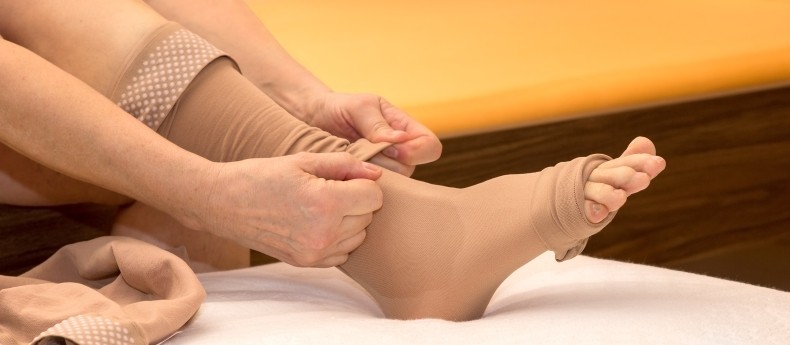
EVLA: The New Standard of Varicose Vein Treatment
Varicose veins are a common disease that affects a wide variety of people – not only from a cosmetic point of view but also from a medical one. This article will help you learn more about varicose veins and how to treat them.
What are varicose veins?
These are the most common disease among a group of vein disorders called lower extremity chronic venous diseases, which also includes other disorders like telangiectasias and chronic venous insufficiency (CVI). Telangiectasias only causes cosmetic concerns while CVI has more severe symptoms and can cause more pathological damage to the body if not treated. Varicose veins develop from CVI if not treated or treated in a timely fashion.
The anatomy of veins in lower extremities and the cause of varicose veins
In general, we have two different systems of veins in our lower extremities, including the superficial vein system and deep system, with several veins connecting the superficial and deep systems called perforator veins. Normally, the blood flow in the veins of lower extremities is able to move upwards to the heart against gravity with the help of the heart pumping and contractions of the muscles in the legs. At the same time, the venous valve, a structure on the inner wall of the vein opening and closing automatically, will stop the blood from moving backwards (reflux). However various conditions can cause abnormal increases in vein pressure, such as a decrease in muscle contractions in the leg, impaired venous valves, obstructions inside the vein, or simply from obesity or pregnancy. The increased pressure causes twisting (tortuous), dilation, and hyperplasia of the involved vein and its branches and develops into varicose veins. On the other hand, the varicose veins cause venous hypertension and insufficiency in venous valves, forming a vicious cycle that leads towards more severe disease – chronic venous insufficiency, with symptoms that include skin discoloration of skin, swelling and edema of the legs, and even persistent soft tissue ulcers.
General symptoms
Generally speaking, symptoms include pain, leg heaviness or aching, swelling, dry skin, tightness, skin irritation, muscle cramps, and itching. More severe clinical signs include dilated veins, edema, lipodermatosclerosis (a fibrosing dermatitis of the subcutaneous tissue), or ulceration. If you notice there are significant tortuous veins in your leg or thighs, or feel pain or heaviness in the legs after prolonged standing and sitting, you may want to see a surgeon for further evaluation.
Treatment
Conservative treatments include leg elevation, calf muscle contraction, and compression stockings, all of which may be used to control or subside the symptoms surgical intervention is needed. However, when conservative treatment is ineffective or Doppler ultrasound exams discover impaired venous valve function that are causing reflux in the veins, it is time for you to seek surgical treatment before more damage is sustained.
Surgical treatment includes conventional stripping or excision of the veins, sclerotherapy and thermal ablation.
With the development of minimally invasive surgical procedures, endovenous laser ablation (EVLA), one of the latest in thermal ablation techniques, is now being used worldwide to treat varicose veins. To put it simply, this procedure involves inserting an endoscopic light transmitting bundle as thin as a human hair into the target vein, through which the laser burns and collapses the vein to functionally shut it off. Compared with conventional stripping operations, EVLA has significant advantages – including a minimally invasive approach, much less pain, faster recovery, and shorter hospitalizations. In general, EVLA can be performed as a day surgery under sedation or general anesthesia, and patients will be able to walk without assistance on same day of surgery and allowed back to work in 3-4 days.
While EVLA is effective for most patients with varicose veins, some still need to combine EVLA with conventional procedures. It is best to first consult with a specialized surgeon to understand options and treatment times to avoid overtreatment or delayed treatment.
The surgical team at Shanghai United Family Hospital and Clinics is very experienced in dealing with varicose veins and using multiple treatment options. We have treated our patients successfully for years with excellent outcomes. Please feel free to make an appointment with our surgeons if you have any questions about varicose veins for yourself or a loved one.
References:
Overview and management of lower extremity chronic venous disease, Patrick C Alguire, MD, FACP
Barwell JR, Davies CE, Deacon J, et al. Comparison of surgery and compression with compression alone in chronic venous ulceration (ESCHAR study): randomised controlled trial. Lancet 2004; 363:1854.
58.Alden PB, Lips EM, Zimmerman KP, et al. Chronic venous ulcer: minimally invasive treatment of superficial axial and perforator vein reflux speeds healing and reduces recurrence. Ann Vasc Surg 2013; 27:75.
79.van den Bos R, Arends L, Kockaert M, et al. Endovenous therapies of lower extremity varicosities: a meta-analysis. J Vasc Surg 2009; 49:230.
Copyright United Family Healthcare 2018 All right reserved ICP 京ICP备13017554号-4



